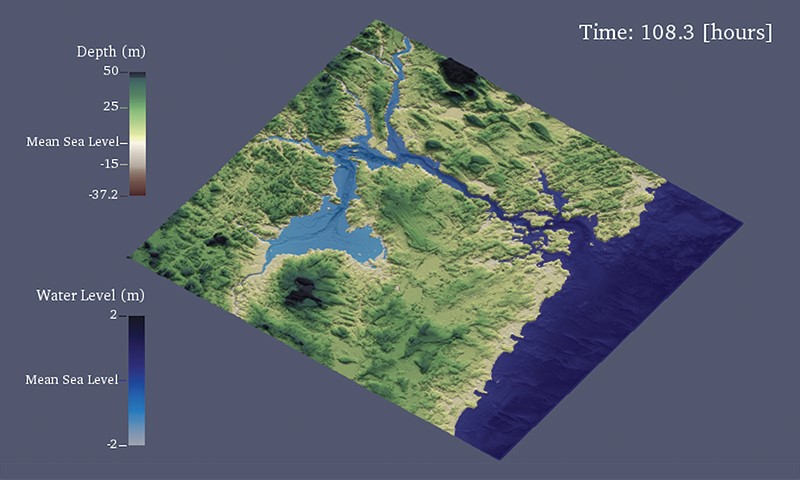In this video, Salme Cook from the University of New Hampshire describes how she is using NCSA’s Blue Waters supercomputer to model estuaries. One of the big challenges oceanographers face is the inability to observe their science directly. Cook is focused on modeling two particular estuaries in New Hampshire that are experiencing water quality degradation.
There’s a lot of reasons for that,” she says. “But one of the areas of research I’m looking at is nutrient release from sediments. When you have an excess amount of nutrients, then you start having problems. We’ll get events like algae blooms. What happens with algae is that they take up all these extra nutrients, their population rapidly increases and clouds the water, which blocks sunlight to vegetation that’s underneath. And vegetation in estuaries is really, really important. They actually lead to water clarity by slowing water flow which then allows sediment to “fall out” of the water column. They also provide important habitat for juvenile fish populations. But what happens is the algae then die pretty quickly, taking all the oxygen out of the water which leads to other events like fish kills, which are really big issues in areas like Florida and the foot of the Mississippi River.”
According to Cook, Supercomputing modeling shows the importance of shear stress, which you can’t really measure directly. For their models, they have to estimate what the water is doing to the sediment during different stages of a tide or what the waves are doing to the sediment. Cook points out that researchers have never really modeled and observed shear stress in the New England area, and applied them in this way.

The Piscataqua River-Great Bay estuary at mid-tide—108.3 hours into the model run. Darker blue colors indicate higher water levels than lighter blue colors. The differences in the tidal level from the Atlantic Ocean to the estuary drive large tidal currents that are important for sediment transport.
Blue Waters has been great because it’s allowed us to get all of these steps up until waves. And that’s the part of the research that I wasn’t expecting to do during my Ph.D., but Blue Waters accelerated some of the work that I’ve done. So now we’re working on this new stuff.”
Read the Full Story





